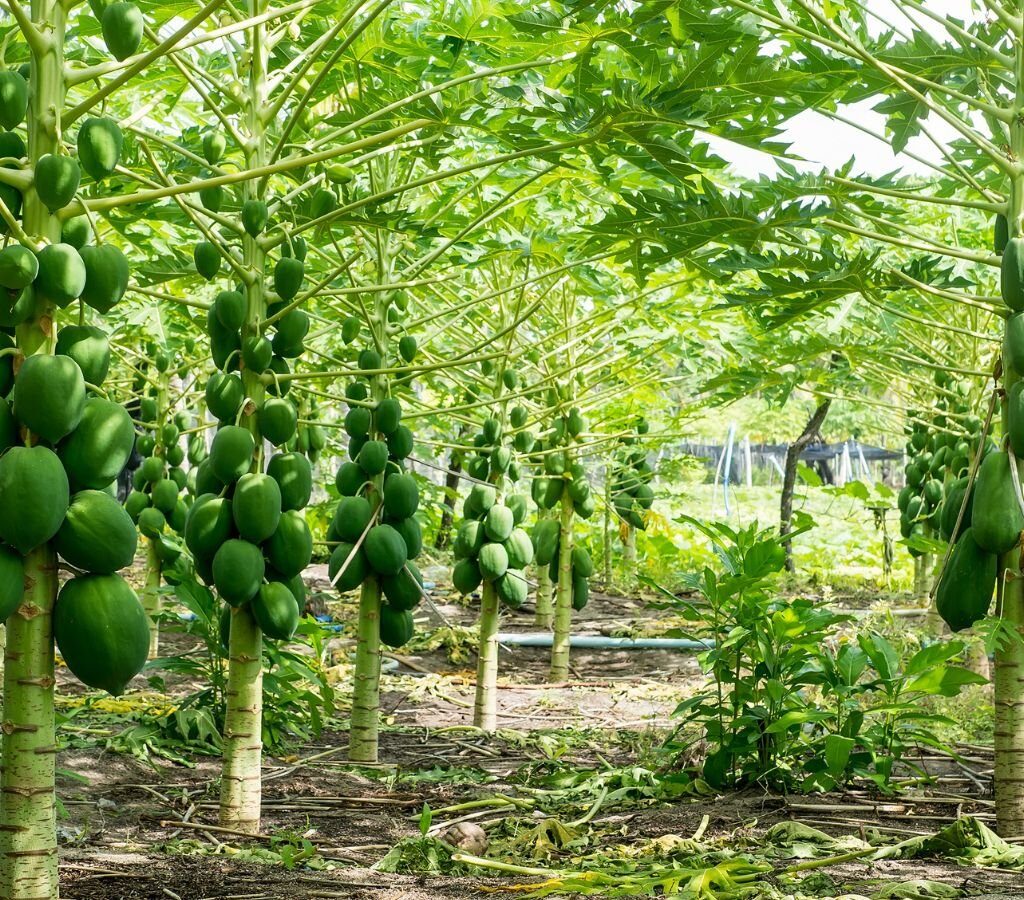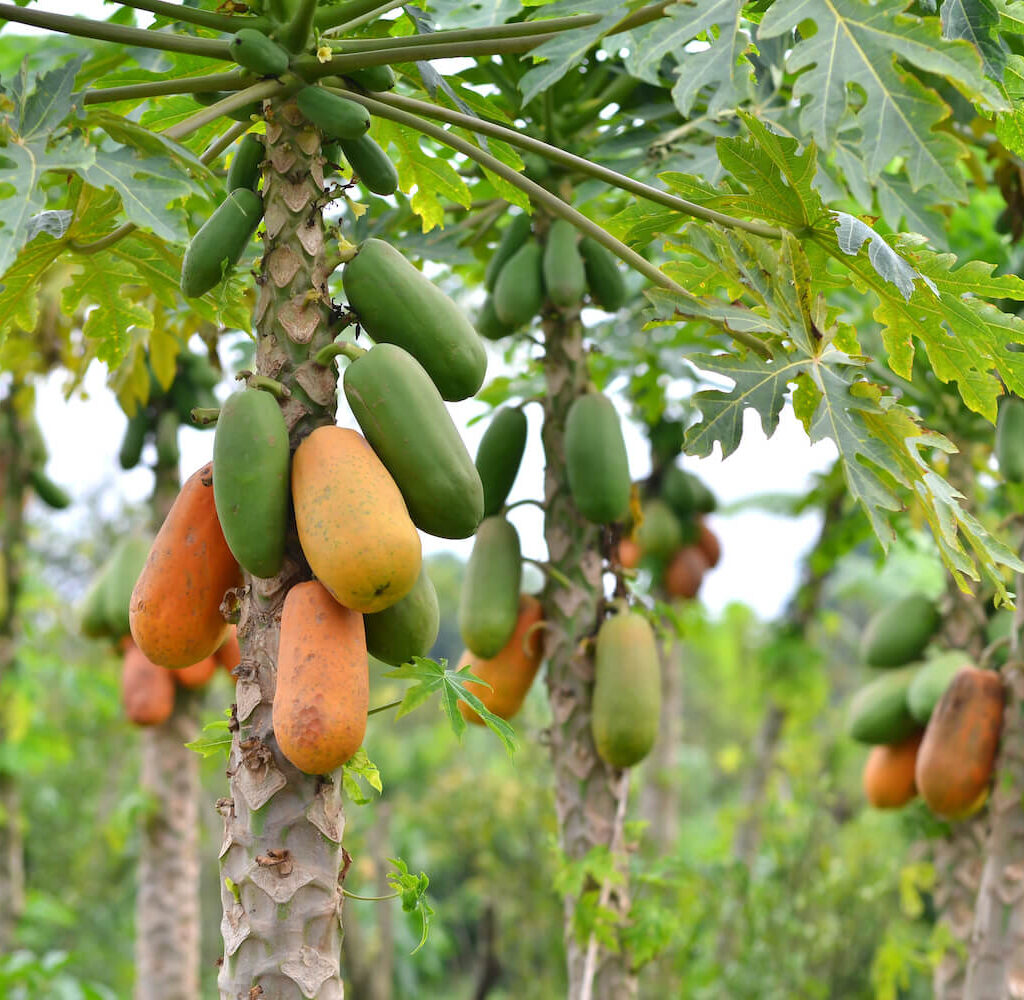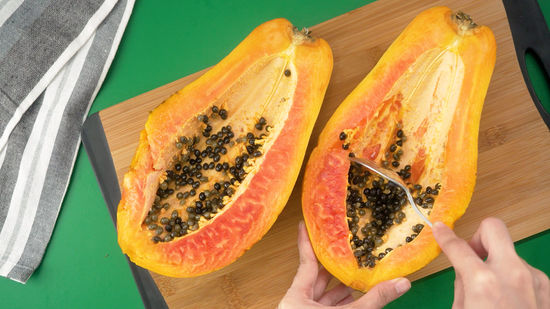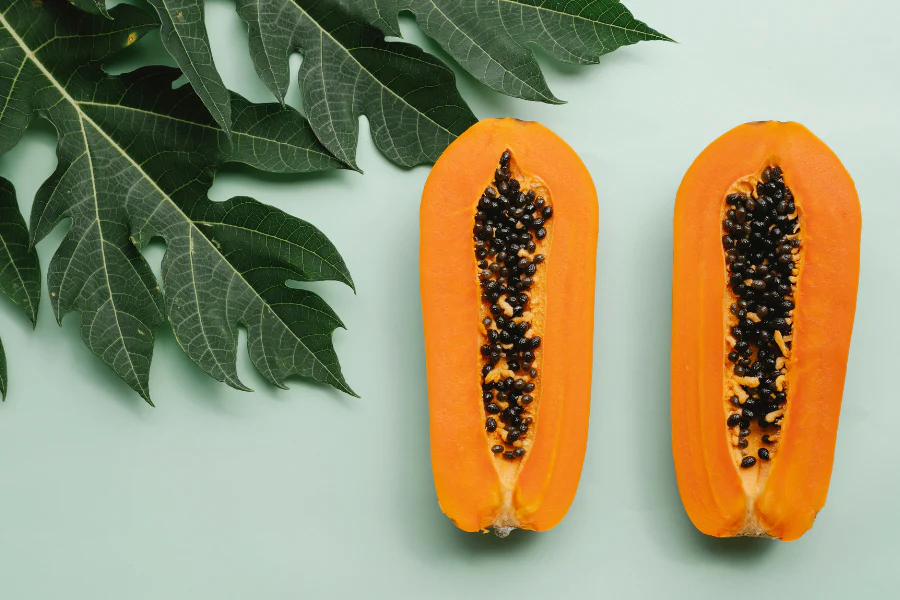Few things evoke the taste of the tropics like the sweet, sun-ripened flesh of a papaya. Whether you’ve savored it in a fruit salad, blended it into a smoothie, or enjoyed it fresh from the tree, this exotic fruit brings a burst of sunshine to your plate. The great news is — you don’t have to live in a tropical paradise to grow your own papaya tree. With the right care and a little know-how, you can plant papaya seeds and enjoy this vibrant fruit from your very own garden.
In this comprehensive guide, we’ll walk you through how to plant papaya seeds step-by-step, how to care for your growing tree, and what to expect as you cultivate your tropical flavors at home.

Why Grow Papaya at Home?
Papaya isn’t just a beautiful and delicious fruit — it’s loaded with health benefits too. Rich in vitamins A, C, and E, as well as digestive enzymes like papain, papaya is known for boosting immune health, supporting digestion, and promoting skin wellness. Growing your own ensures you get the freshest, pesticide-free produce right at your fingertips.

Understanding Papaya Plants
Papaya (Carica papaya) is a fast-growing, herbaceous plant that behaves much like a tree but lacks woody growth. It thrives in warm, sunny environments and can grow up to 15-30 feet tall under ideal conditions.
Papaya plants come in three types:
- Male: Produces only pollen, no fruit.
- Female: Produces fruit when pollinated.
- Hermaphrodite: Self-pollinating and produces fruit on its own.
For home gardens, hermaphrodite plants are most convenient because you won’t need multiple trees for pollination.

What You’ll Need
Before getting started, gather these supplies:
- Fresh, ripe papaya fruit
- Water
- Small planting containers or seed trays
- Well-draining potting mix
- Compost or organic fertilizer
- Garden space or large pots (for transplanting)
- Mulch

Step-by-Step Guide to Plant Papaya Seeds
1. Choose a Ripe Papaya
Start with a fully ripe papaya — preferably one grown organically, as commercial varieties may be hybridized and less reliable for seed saving. The fruit should be slightly soft with orange-yellow skin.
2. Extract and Clean the Seeds
- Cut the papaya in half lengthwise.
- Scoop out the black, gel-covered seeds with a spoon.
- Rinse the seeds thoroughly under cool water to remove the gelatinous coating, which can inhibit germination.
- Rub the seeds gently in a sieve or between your fingers to clean them.
3. Dry the Seeds
Spread the cleaned seeds out on a paper towel or plate in a warm, shaded area for 1-2 days to dry. Avoid direct sunlight, which can damage them.
4. Prepare Your Planting Containers
Fill seed trays or small containers with a well-draining potting mix. A mixture of garden soil, sand, and compost works well.
Pro tip: Papaya roots are sensitive and don’t like being disturbed, so plant in biodegradable pots if possible, making transplanting easier.
5. Sow the Seeds
- Plant 2-3 seeds per container about ½ inch deep.
- Lightly cover with soil and gently water.
6. Provide Warmth and Sunlight
Papaya seeds need warmth to germinate. Keep the containers in a spot with a temperature around 75-85°F (24-29°C).
Place them in a sunny windowsill, greenhouse, or use a heat mat if indoors during cooler months.
7. Keep the Soil Moist
Mist or lightly water the soil daily to keep it consistently moist but not waterlogged. Germination typically occurs within 2-4 weeks.
8. Thin Out Seedlings
Once the seedlings reach 4-6 inches tall, thin them by removing the weakest seedlings, leaving the strongest one in each pot.
Transplanting Papaya Seedlings
When your seedlings are 8-10 inches tall and have developed several leaves, they’re ready for transplanting outdoors or into larger pots.
Best Time to Transplant:
Early spring or when the danger of frost has passed.
Site Selection:
Choose a sunny, sheltered spot protected from strong winds. Papaya plants need full sun for at least 6-8 hours daily.
Soil Requirements:
Well-draining, slightly acidic to neutral soil (pH 6.0-7.0) enriched with compost.
How to Transplant:
- Dig a hole twice the size of the seedling’s root ball.
- Gently place the seedling in the hole, keeping it at the same depth it was growing in the pot.
- Backfill with soil and water thoroughly.
- Space multiple plants 6-10 feet apart.
Caring for Your Papaya Plants
1. Watering
Papayas love moisture but hate soggy roots. Water deeply 2-3 times a week, adjusting for rainfall. Avoid overwatering, which leads to root rot.
2. Feeding
Feed your papaya plants monthly with a balanced organic fertilizer or compost tea. They’re heavy feeders, especially while fruiting.
3. Mulching
Apply a layer of organic mulch around the base to retain soil moisture, regulate temperature, and suppress weeds.
4. Protecting from Cold
Papayas are frost-sensitive. In colder regions, plant them in large pots that can be moved indoors during chilly weather.
When to Expect Fruits
Papaya trees grow quickly. Under ideal conditions:
- Seedlings can flower in 5-8 months.
- Fruits typically ripen 7-11 months after planting.
Each tree can bear 30-150 fruits a year, depending on care and climate.
Common Papaya Growing Problems
1. Root Rot
Caused by poor drainage or overwatering. Ensure soil drains well and never allow the plant to sit in water.
2. Aphids and Whiteflies
These sap-sucking insects can be controlled with insecticidal soap or neem oil spray.
3. Papaya Ringspot Virus
Characterized by yellowing leaves and ring-shaped spots on fruits. Remove infected plants promptly to prevent spread.
Final Thoughts
Growing papaya from seed is a simple, rewarding project that adds a lush, tropical vibe to your garden — and sweet, healthy fruits to your kitchen. By following these steps, you can nurture your own papaya tree from seed to harvest and enjoy the flavors of the tropics right at home.
Ready to start planting? Pick up a ripe papaya, save those seeds, and let the tropical gardening adventure begin!





Leave A Comment